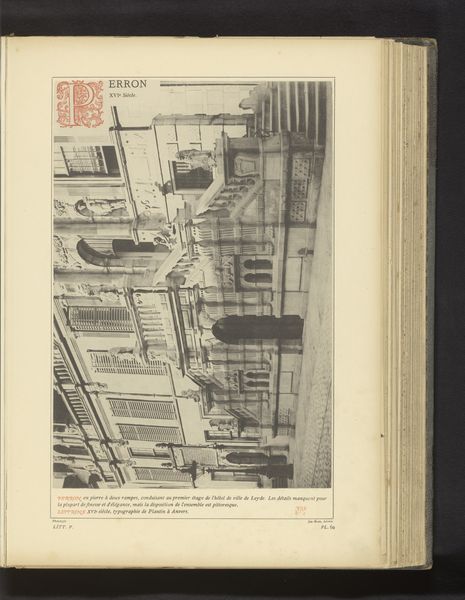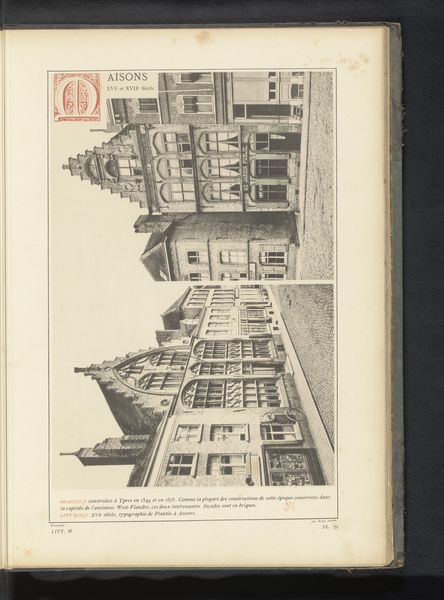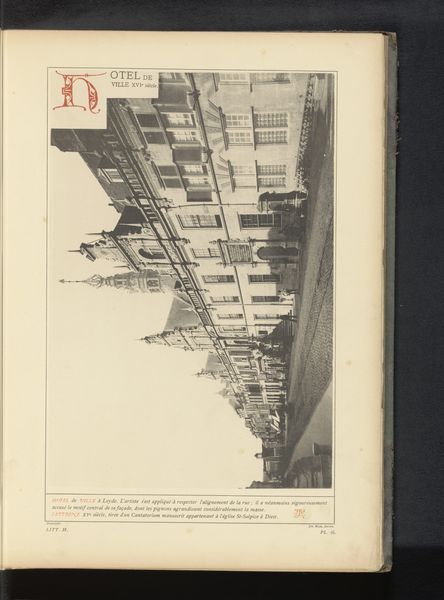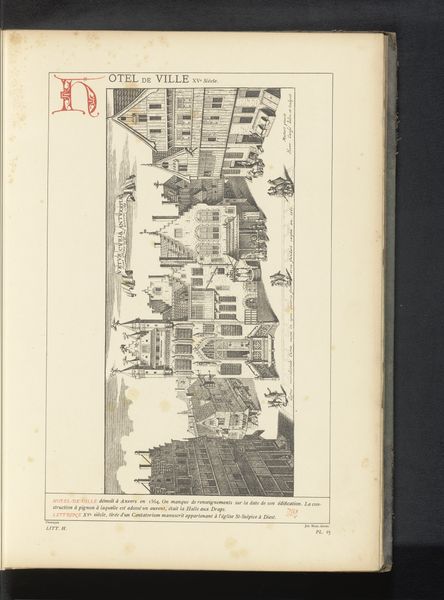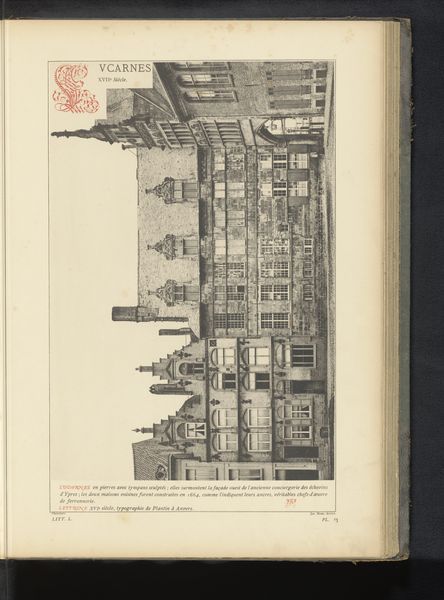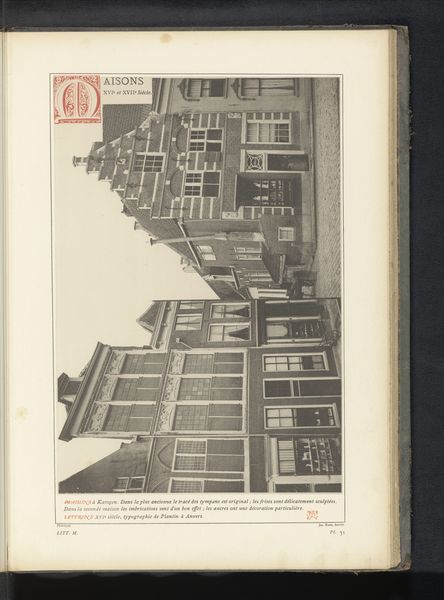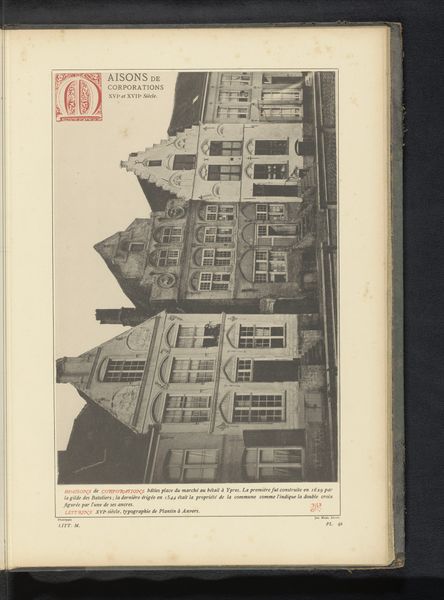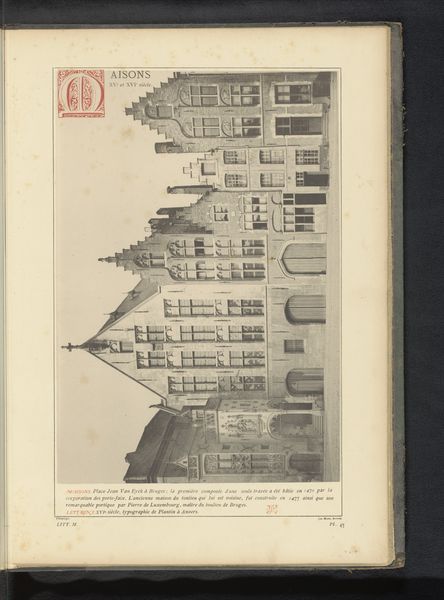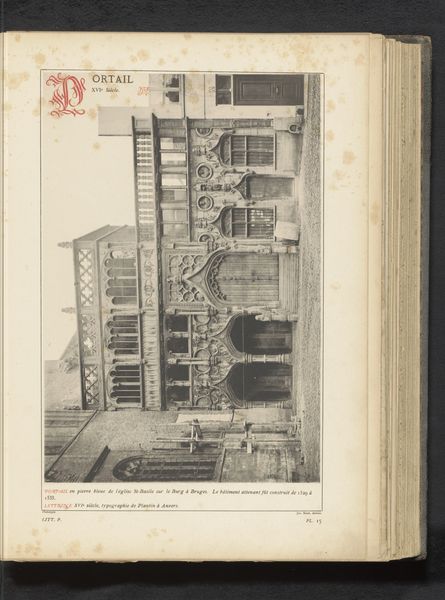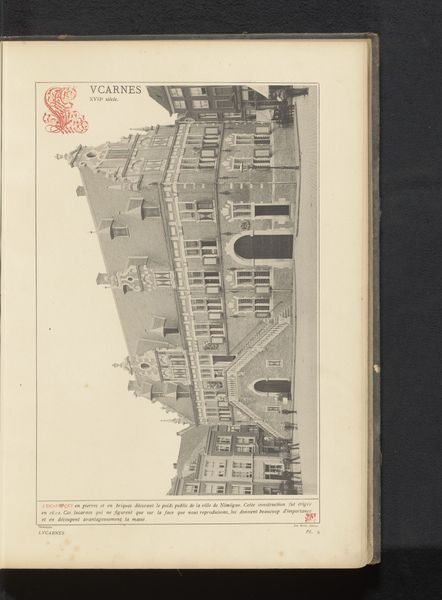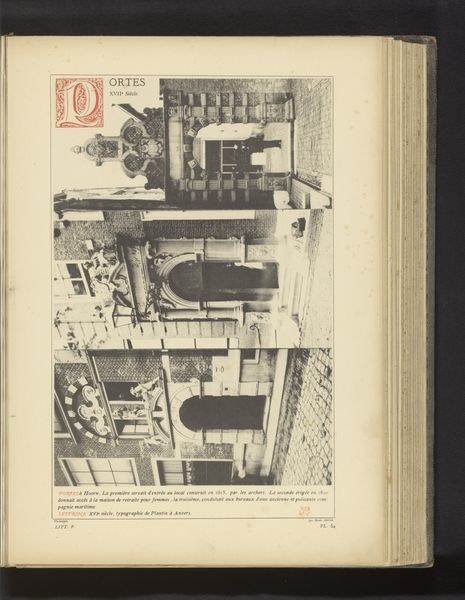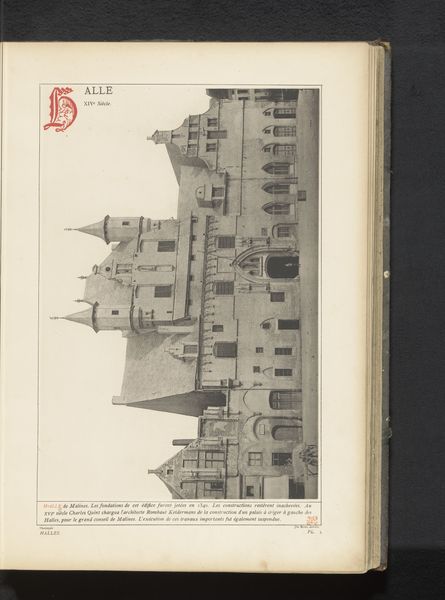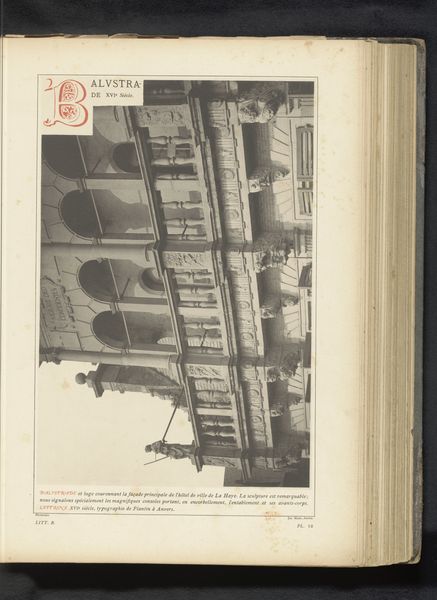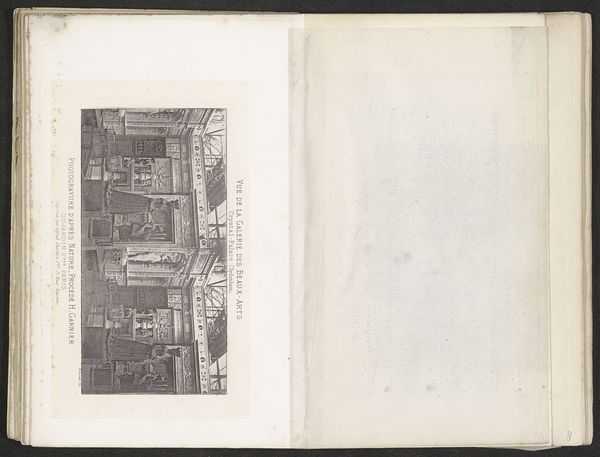
Gezicht op een huis aan de Rue de Paris en een gezicht op een deel van het Celestijnenklooster in Doornik, België before 1880
0:00
0:00
drawing, print, etching, paper, ink
#
drawing
# print
#
etching
#
paper
#
ink
#
cityscape
#
realism
Dimensions: height 229 mm, width 337 mm
Copyright: Rijks Museum: Open Domain
Curator: Let’s take a look at this etching, "Gezicht op een huis aan de Rue de Paris en een gezicht op een deel van het Celestijnenklooster in Doornik, België," dating from before 1880. It's an anonymous work, rendering a cityscape in ink on paper. Editor: It's stark. The angular architecture looms almost menacingly. All those sharp lines and heavy shadows give a powerful impression. What do you make of its composition? Curator: I’m particularly drawn to how the artist rendered the textures. Notice the clear contrast between the brickwork of the house and the stonework of the monastery. This detailed etching process emphasizes the inherent qualities of each building material, doesn't it? The etching seems concerned with showing how space is shaped through construction, particularly the labor involved in laying each brick. Editor: For me, the architecture takes on a more symbolic weight. The juxtaposition of the house on the Rue de Paris with the Celestijnenklooster triggers ideas about the earthly versus the spiritual. The house might represent everyday life, whereas the cloister suggests seclusion and devotion. It makes you wonder about the relationship between the secular and the sacred during that period. Curator: It does present an interesting interplay of social functions mirrored by material distinctions. Considering that it's a print, presumably made for wider circulation, the image hints at how urban spaces are not simply aesthetic arrangements, but products of social needs and values. Editor: Exactly. This etching doesn't just capture a moment in time, it encapsulates a dialogue between differing worldviews made concrete in brick and stone. Curator: That interplay reveals how cities are not just built of brick, mortar, and stone, but constructed with embedded ideas, power structures and collective endeavors. Editor: This has definitely reshaped how I viewed what initially felt like just a bleak street view. Now I sense something richer within this seemingly simple piece. Curator: Indeed. Examining the production process illuminates its deeper social implications.
Comments
No comments
Be the first to comment and join the conversation on the ultimate creative platform.
